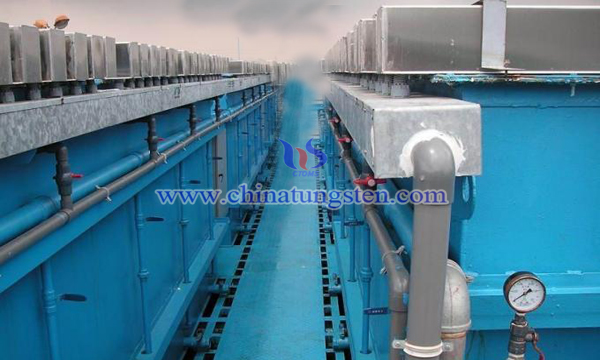Bismuth Tungstate Composite Fiber Material
- Details
- Category: Tungsten Information
- Published on Tuesday, 10 April 2018 20:23
With the rapid development of chemical industry such as pesticides, dyestuff, petrochemical industry, environmental pollution is becoming more and more serious. Among them, printing and dyeing wastewater has become one of the most important sources of water pollution. There are many kinds of dyes and auxiliaries, and most of them are difficult to degrade. Some of them also contain carcinogen, such as benzene ring, amine group, azo group and so on. All these have added difficulty to the treatment of dye wastewater.

Some researchers use the rich micropores of textile fiber and narrow pore size distribution, large surface area, large adsorption capacity and high adsorption rate, which combines the strong photocatalytic oxidation performance of bismuth tungstate photocatalyst and textile fiber to prepare the composite fiber material and use it for wastewater treatment and air purification. The process of synthesis is as follows:
After washing and drying the fiber through pure water, ethanol and deionized water, after impregnating in ammonium tungstate solution for a period of time, the material is removed and dissolved in Bi (NO3)3 solution, and after the mixture is fully mixed, the pH value is adjusted by ammonia water. The reaction mixture is placed in a high-pressure reactor and crystallized at 100~200 centigrade. The Bi2WO6 can be produced on the fiber material, and the bismuth tungstate composite textile fiber material can be obtained by flushing and drying it.
The bismuth tungstate composite textile fiber material has the following advantages: first, as the application of the visible light catalyst, the diameter of the synthesized photocatalyst particle can be controlled because of the existence of the fiber textile. The energy level of the smaller particle's semiconductor catalyst and the band gap can be increased, the optical electrons or holes are diffused to the surface. The average time decreases, and the recombination probability between electrons and holes decreases, which improves the photocatalytic activity. Second, fiber textiles are organic components. The interaction between semiconductor particles and organic components can stabilize the catalyst particles and prevent their agglomeration and inactivation. Third, textile fibers can not only serve as carriers, but also solve the problem of recovery of photocatalysts of lanthanum tungstate, and its structure, adsorption-desorption properties and charge transport properties all affect the catalytic performance of the composite catalysts.
- Tungsten Oxide Manufacturer & Supplier, Chinatungsten Online: www.tungsten-oxide.com
- Tungsten News & Prices of China Tungsten Industry Association: www.ctia.com.cn
- Molybdenum News & Price: news.molybdenum.com.cn
- Tel.: 86 592 5129696; Fax: 86 592 5129797; Email: sales@chinatungsten.com



 sales@chinatungsten.com
sales@chinatungsten.com